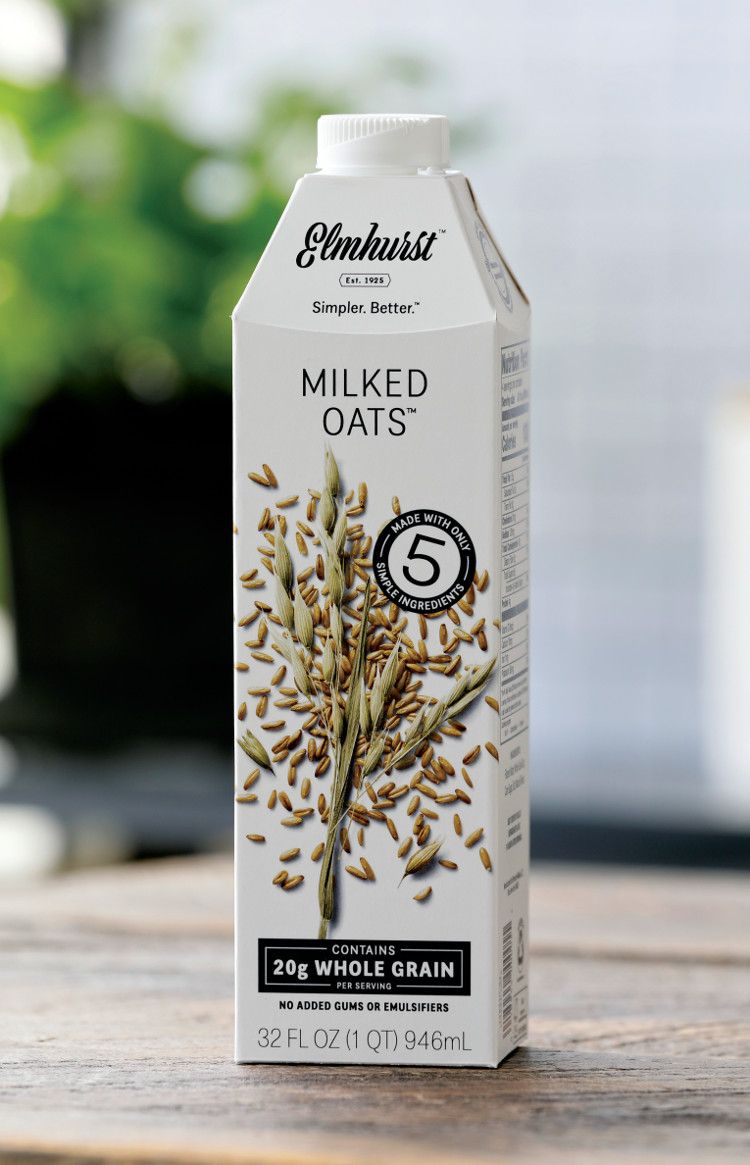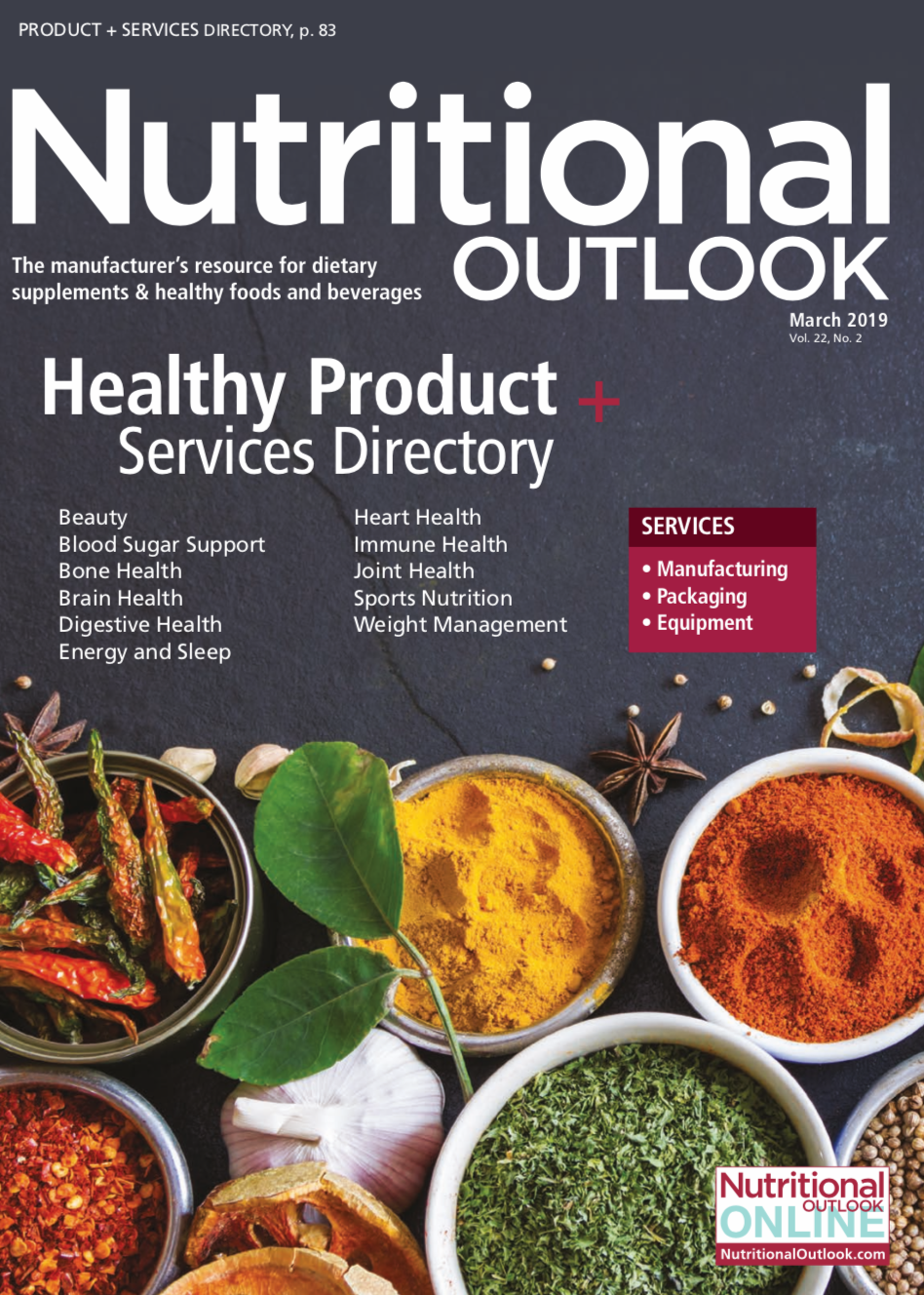Oat milk is the new trending plant milk
Oat milk is the most recent plant milk to take the non-dairy category by storm, offering some advantages over the popular almond milk.
Photo from Elmhurst

Many consumers are reconsidering their consumption of animal proteins and dairy on environmental, ethical, and health grounds. Cutting out dairy is often the start, and as a result, the plant-based milk industry is booming. While dairy milk’s market share is still the largest, dairy producers are aware of the competition in their aisle and are trying to protect their turf. Senators sympathetic to the dairy industry drafted legislation targeting the plant-based dairy industry, such as the Dairy Pride Act introduced by Wisconsin Democrat Tammy Baldwin in January 2017.
The bill sought to prohibit plant-based dairy products from using terminology long related to dairy, such as milk, cheese, or yogurt, arguing that these terms mislead consumers who may believe these products have the same nutritional content as dairy-based products. FDA recently expressed the same concern, opening up a public comment period to determine whether or not consumers are being misled. In the meantime, the plant-based milk industry continues to prosper, fostering competition within the category.
Rise of Oat Milk
Oat milk is the most recent plant milk to take the non-dairy category by storm, offering some advantages over the popular almond milk. Although oat milk is not particularly new to the plant-based milk category, it has only recently captured the attention of the American marketplace, and a lot of companies are just now jumping on the oat-milk train.
Oatly, a Swedish oat milk company formed in 1990, can be credited for oat milk’s rise, according Peter Truby, vice president of Elmhurst (Elma, NY). (Elmhurst is a former dairy that now manufactures a wide variety of plant milks.)
“Everyone who’s making oat milk has to give credit to Oatly for the trend,” says Truby. “Because of their strong branding and some nifty marketing, they created a trend. The trend has led not just to an interest in Oatly, but to an interest in oat milk.”
According to Nielsen, sales of oat milk grew 23% in the 52 weeks ending June 30, 2018, and at the end of 2018, demand for Oatly’s products was so high, the company suffered a supply shortage. It has since restocked and announced the construction of a new production facility in Millville, NJ, which Oatly said will increase production eight-fold.
While oat milk was gathering momentum, Elmhurst, which has been making oat milk since 2017, announced in June 2018 that it had entered into a new oat-sourcing agreement with a Manitoba, Canada–based farm, securing a consistent supply of a high-quality oat. At the beginning of 2019, Elmhurst debuted a barista version of its milked oats. Popularly termed “barista” products are designed to pair especially well with coffee drinks. Califia Farms, who also recently entered the oat milk space, also introduced a barista-blend oat milk. Another significant newcomer to the space is the Quaker Oats Company, which launched its Oat Beverage at the beginning of 2019, positioned toward heart health. And dairy-free industry giant Silk launched its Oat Yeah oat milk this January. The brand already offers almond milk, cashew milk, and coconut milk.
Oat milk’s functional similarities to milk are commonly cited as a reason for its popularity, particularly when coffee is involved. “What people are finding with oat milk is that it’s very similar to dairy milk in that it’s creamy and it’s an easy transition in terms of taste and consistency,” explains Truby. “You can use it in coffee and in a variety of other ways like dairy milk, so I think it’s a combination of that and, to be honest, a fatigue with almond milk. It’s also much more sustainable than dairy and much more sustainable than even almond milk, for which water usage is way high.”
While oat milk is already well-suited for use in coffee, the aforementioned “barista” versions of oat milk and other plant milks are popular additions to both households and coffee shops. “Most plant milks don’t do well in acidic environments or in hot, acidic environments, and they want to separate, like oil and water,” says Truby. “So, while it tastes fine, it doesn’t look appealing; it looks like it’s curdling. With our barista blend, we add one ingredient, phosphate. What phosphates do is buffer the acidity in the coffee to allow the plant milk to stay together.”
Looking Ahead
Another important trend throughout the plant milk category is the desire for unsweetened products. “There is a larger trend of people getting away from sugar, so there is a lot of traction with our unsweetened almond,” says Truby, explaining that Elmhurst will be rolling out an unsweetened version of its oat milk.
As the plant milk market matures and more consumers experiment with plant-based milk products, trends within the category are sure to shift. Almond milk still has a majority of the market share, and oat milk is trending in popularity, but with six types of plant milks in Elmhurst’s inventory alone, there are huge possibilities. Cashew milk, for example, has been simmering in popularity for a few years now and has yet to break through the same way almond or oat milk have, to Trudy’s surprise. “In my opinion, it tastes the best,” he says. “I think when people finally get to cashew, they’re going to see how good it is.”


.png&w=3840&q=75)

.png&w=3840&q=75)



.png&w=3840&q=75)



.png&w=3840&q=75)
























